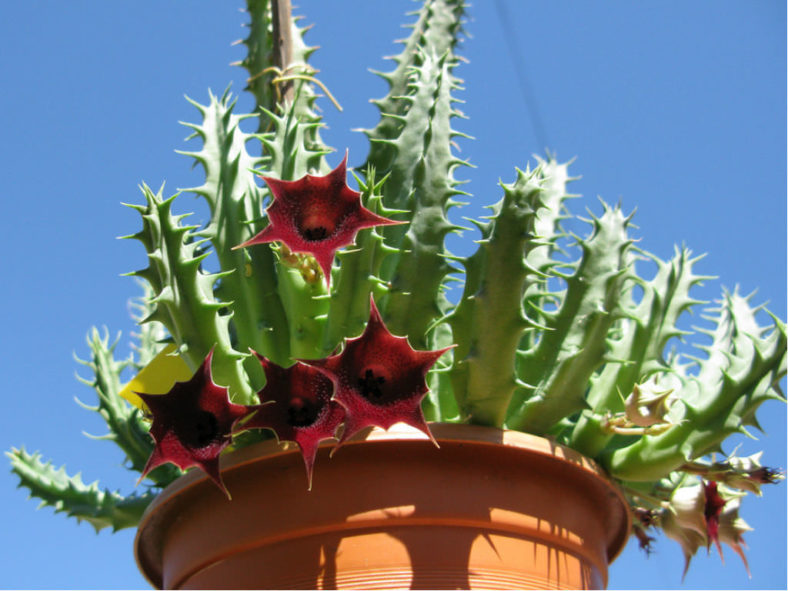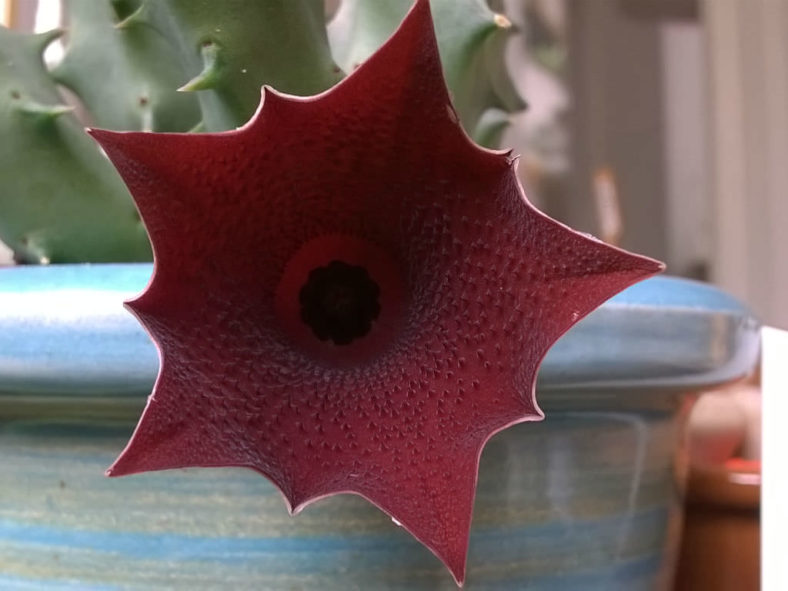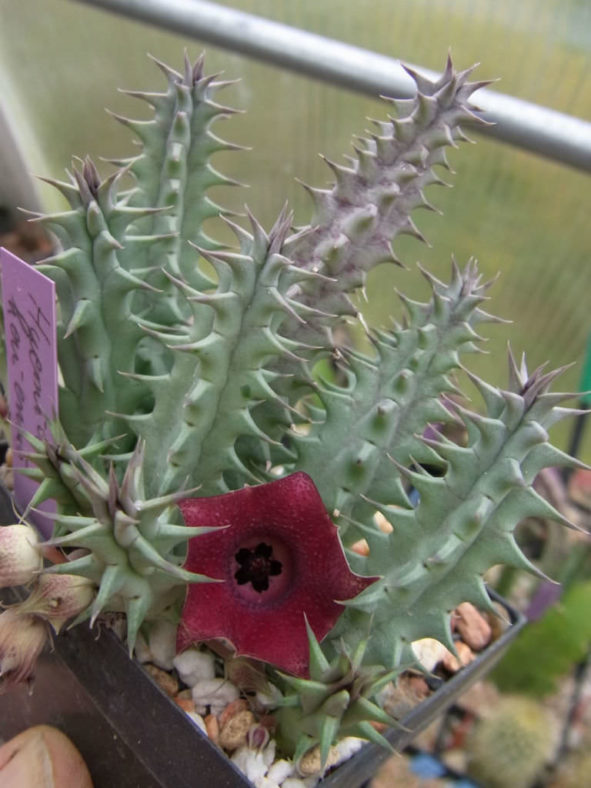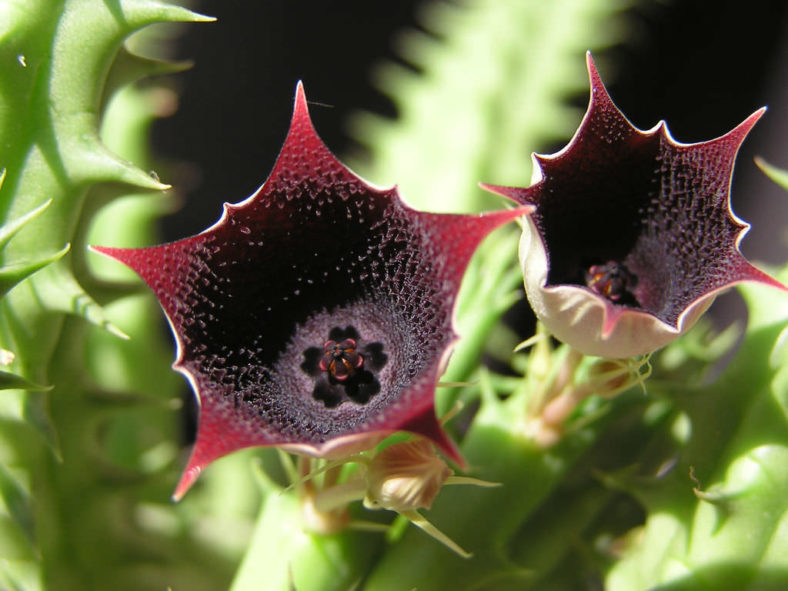Scientific Name
Huernia keniensis R.E.Fr.
Synonym(s)
Huernia keniensis var. keniensis
Common Name(s)
Kenya Dragon Flower, Kenyan Dragon Flower
Scientific Classification
Family: Apocynaceae
Subfamily: Asclepiadoideae
Tribe: Stapeliae
Genus: Huernia
Etymology
The specific epithet "keniensis" (pronounced "ken-ee-EN-sis") means "of or from Kenya" and refers to the type locality of this species. This species was first collected in Kenya by brothers Robert E. Fries and Thure Fries in 1922, west of Mount Kenya, at an altitude of approximately 5,900 feet (1,800 m).
Origin
Huernia keniensis is native to Kenya and Tanzania. It occurs in stony to rocky localities, usually in bright shade, at elevations from 4,920 to 6,560 feet (1,500 to 2,000 m).
Description
Huernia keniensis is a small, clump-forming succulent with prostrate to erect, irregularly branching stems with prominent, acute tubercles widely spaced and joined into five rows up the stem with a V-shaped groove between these rows. The stems are grey-green with small brownish spots or reddish apex. They are thick, fleshy, and can grow up to 5 inches (12.5 cm) long and 0.4 inches (1 cm) in diameter. The leaves are rudimentary or absent.
The flowers are bell-shaped or cup-shaped, 5-merous, and often have five smaller lobes between the main lobes. They are usually reddish or purplish outside and dark purple, densely papillose inside. The flowers can reach a diameter of up to 1 inch (2.5 cm) and appear solitary or in pairs at the base or middle of the stems in winter, and do not have a carrion-like smell. The fruits consist of a pair of follicles with numerous, strongly compressed seeds with a coma (a tuft of silky hair) at the apex.

Varieties of Huernia keniensis
- Huernia keniensis var. globosa
- Huernia keniensis var. grandiflora
- Huernia keniensis var. keniensis
- Huernia keniensis var. nairobiensis
How to Grow and Care for Huernia keniensis
Hardiness: USDA hardiness zones 10b to 11b: from 35°F (1.7°C) to 50°F (10°C).
Huernias require a potting mix with excellent drainage. A succulent plant mix of 50 percent pumice or perlite, 25 percent peat or organic mulch, and 25 percent sand helps prevent rotting and overwatering. Roots experience dieback in cool-season dormancy, so plants grow best in shallow containers that allow the soil to dry out quickly. Using clay pots further prevents the soil from staying too wet. An underlayment of coarse gravel below the soil mix also improves drainage. A layer of gravel between the plant and the soil mix in climates with damp, cool summers also prevents the stems from staying too moist.
Outdoor plantings do well in raised beds. Huernias prefer bright light or partial shade. In nature, they grow underneath shrubs or other plants. Too much sun causes stems to develop protective reddish or purple pigmentation and can actually scald the stems. Insufficient light leads to weak, thin growth and decreased flower production. Huernias grow best between 50°F and 80°F (10°C and 27°C). Protect them from freezing weather.
See more at How to Grow and Care for Huernia.
Links
- Back to genus Huernia
- Succupedia: Browse succulents by Scientific Name, Common Name, Genus, Family, USDA Hardiness Zone, Origin, or cacti by Genus
Photo Gallery
Click on a photo to see a larger version.


